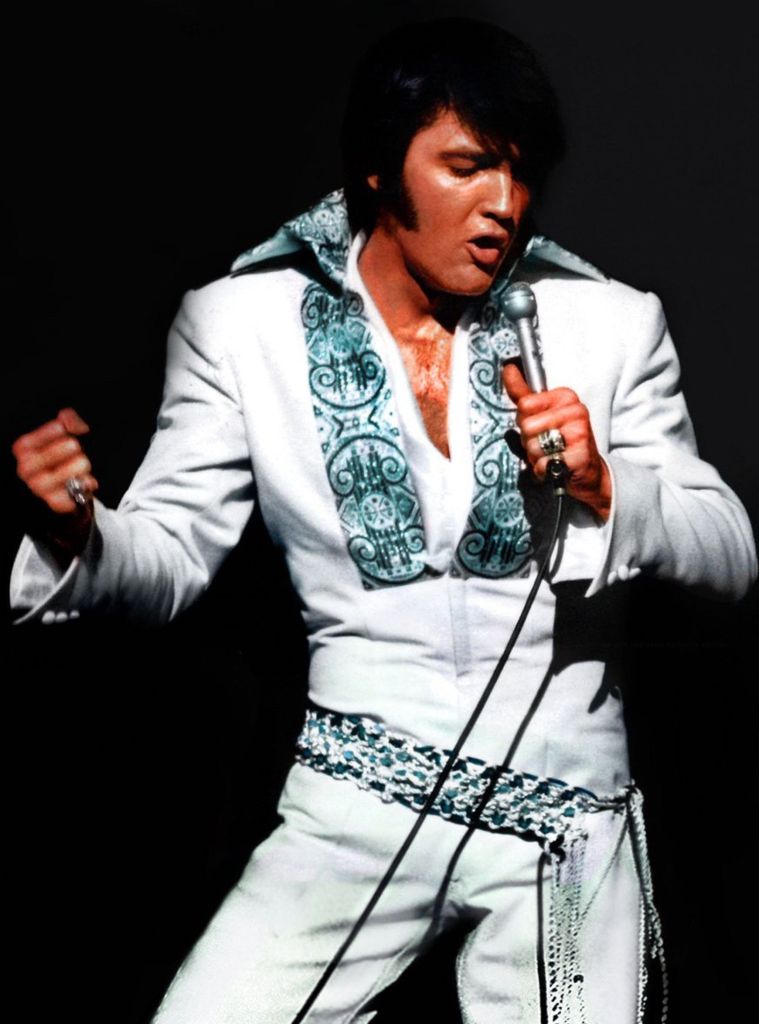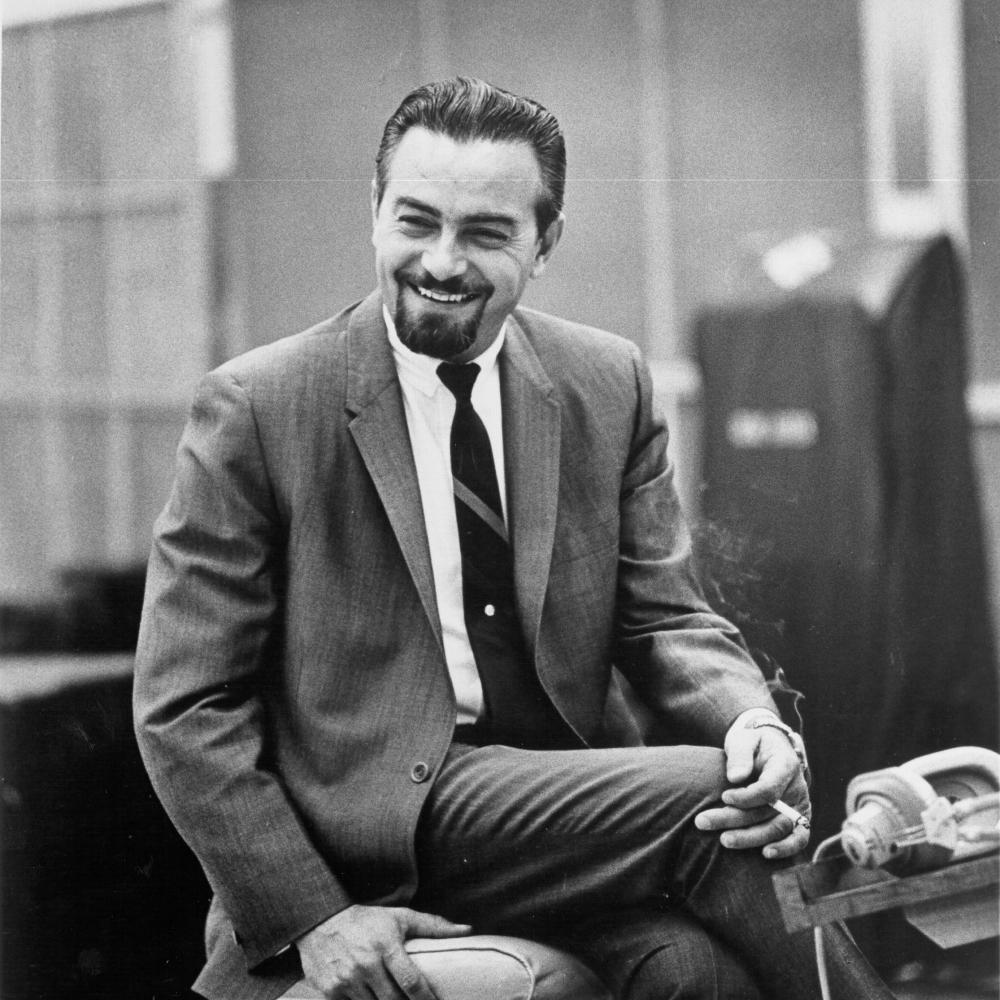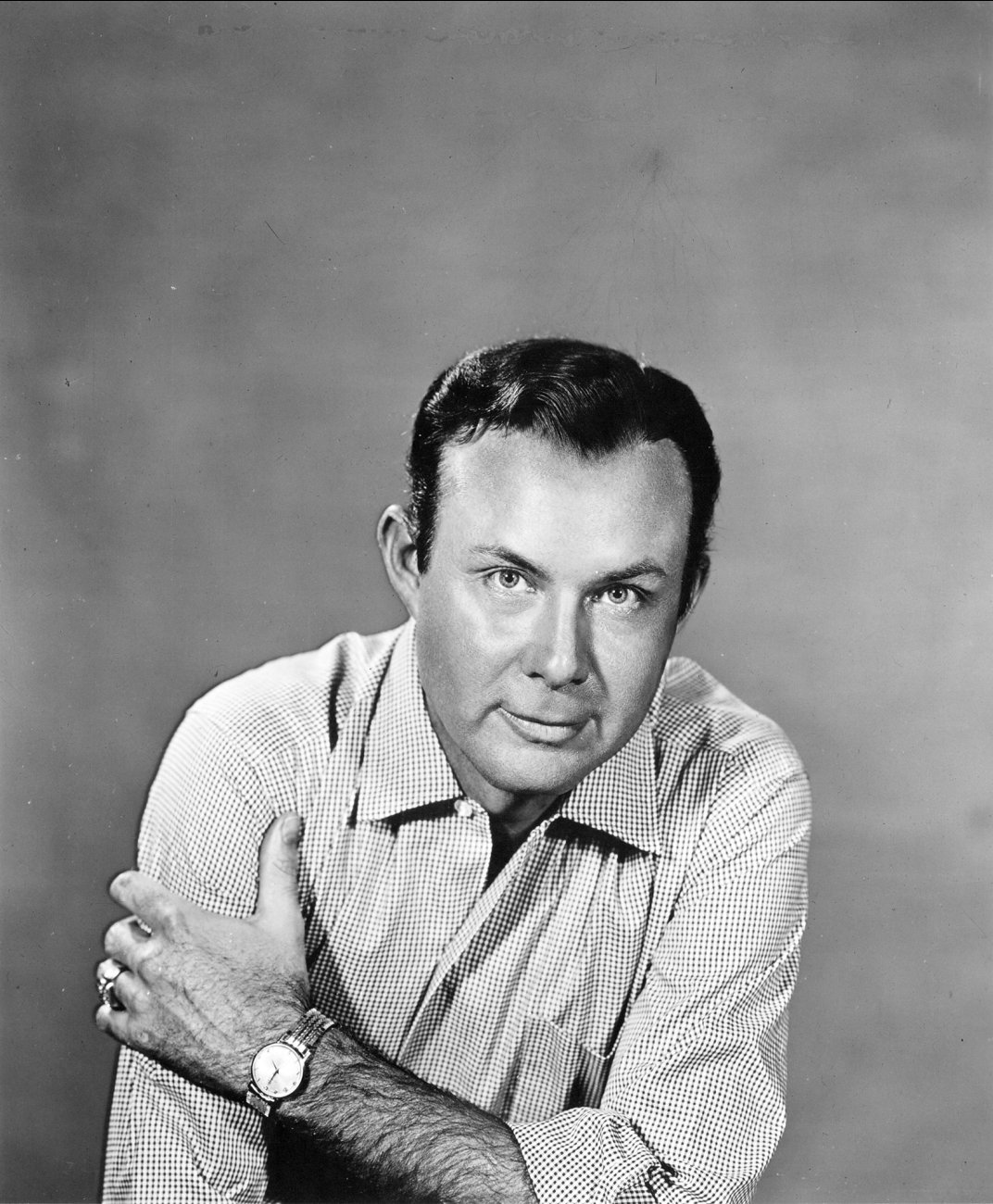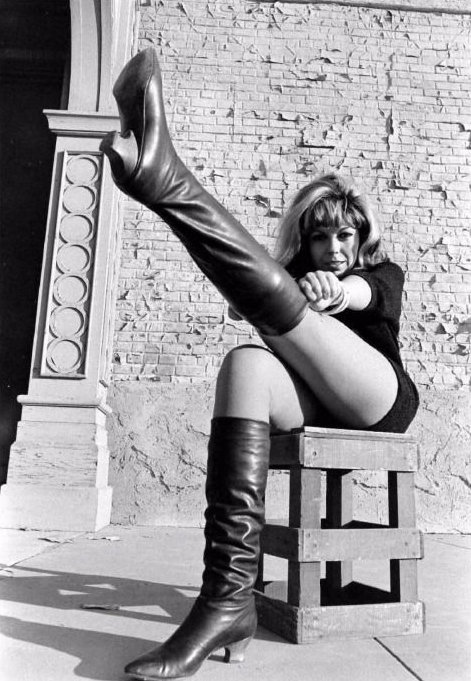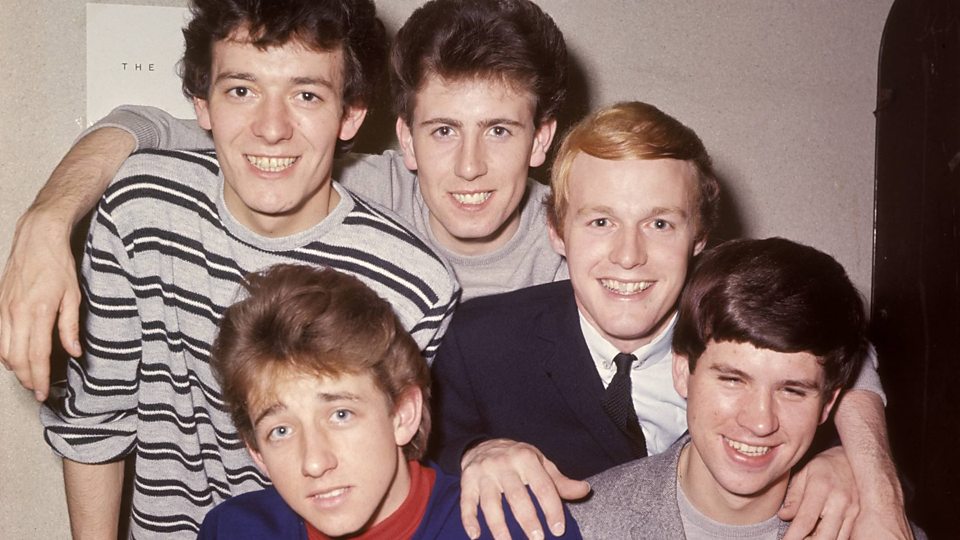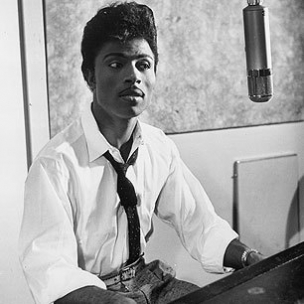
The Intro
Breaking off from the 70s briefly, I noticed over Christmas 2020 that my blog on Every Christmas Number 2 was getting a lot of attention, and in the year that my first book, Every UK Number 1: The 50s was released, I decided to combine the two and give a (very) brief review of every chart runner-up from the first chart of November 1952 through to the end of the decade. Did some of these songs and artists deserve to be in my book, and are some as baffling as the singles that outsold them? As usual, I’ll pick a best and worst for each year, and then an overall pick for each to cover the 50s as a whole. Please note the songs here are singles for which number 2 was their highest position, so future and previous number 1s don’t get a look-in.
1952/53
The first years of the chart were a mix of trad pop, novelty songs and instrumentals. It gets off to a very strange start with Guy Mitchell’s Feet Up (Pat Him on the Po-Po), a typically chipper novelty hit that couldn’t be more different to the original number 1, Here in My Heart. Mitchell is paying tribute to his newborn son, saying he’s going to buy him ‘a horn, a baseball, and drum’… strange mix of gifts. I can’t pinpoint exactly where Mitchell is patting him – what is a Po-Po? I can only assume it’s his head or his arse. Mitchell, an early-50s chart mainstay, replaced himself at number 2 with the similarly upbeat Pretty Little Black Eyed Susie, in which he exclaims he loves his biscuits ‘soaked in gravy’. Truly, a different era. There’s a couple of forgettable instrumentals here – Terry’s Theme from ‘Limelight’, by Frank Chacksfield and His Orchestra, was written by Charlie Chaplin for his 1952 comedy drama, and Mantovani and His Orchestra’s Swedish Rhapsody sounds French more than anything. Frankie Laine was almost permanently in the top spot in 1953, and he’s here too, with quite a spooky-sounding country track, Where the Winds Blow.
The Best

Nat ‘King’ Cole – Pretend
I was familiar with this song due to Alvin Stardust’s 1981 cover, which was in my parents’ vinyl collection as I grew up. A classy orchestral ballad from a great singer, it’s much better than any other 1952/53 number 2, and would have been a better number 1 than Frankie Laine’s I Believe.
The Worst
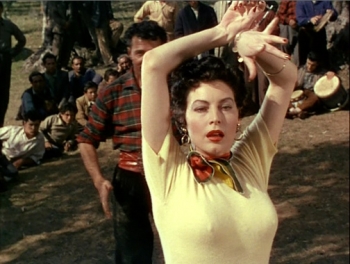
Diana Decker – Poppa Piccolino
Yuck. Twee, cheesy nonsense. An Italian song, originally a satire on the divide between the rich and poor, rewritten to become cheesy fare about a wandering minstrel. Sung by a popular British/American actress of the era who starred in The Barefoot Contessa a year later.
1954
More of the same really, though a few classics start to crop up. Winifred Atwell kicks things off with one of her trademark ragtime medleys. Let’s Have a Party was so successful, it spawned a sequel, and Let’s Have Another Party became 1954’s Christmas number 1. Laine nudged her from the top spot with more western melodrama. Blowing Wild (The Ballad of Black Gold) is grandiose but not as memorable as Where the Winds Blow. More bright and breezy fare from Mitchell followed with Cloud Lucky Seven, which is rather similar to Kay Starr’s 1953 number 1 Comes-A-Long-A-Love. And then we have – of all things, Oberkirchen Children’s Choir’s The Happy Wanderer. This is a live 1953 recording by the BBC of the choir’s winning performance at the Llangollen International Musical. It’s charming to see such a song could be such a success, only nine years after the end of the Second World War. This amateur choir’s original members were war orphans, and the scene in Schindler’s List featuring this song is incorrect – The Happy Wanderer came after the war ended. Cole is back with another pop standard, and it’s the second time Chaplin gets a mention. This version of Smile was the first to feature lyrics and the song’s title, despite the tune being featured in the silent comedy legend’s 1936 film Modern Times. As always, Cole sings beautifully, and it’s perhaps the quintessential version.
The Best

Dean Martin with Dick Stabile and His Orchestra – That’s Amore
Yes, it’s cliched and dated, but it’s also one of Dean Martin’s most enduring signature songs. As always, Martin’s performance is key, and he pulls it off with bucketloads of charm. Originally written for him to perform in the comedy The Caddy from 1953, in which he sang it with comic partner Jerry Lewis. It was nominated for the Oscar for Best Original Song of that year, but lost out to Doris Day’s number 1 Secret Love.
The Worst

David Whitfield with Stanley Black and His Orchestra – Santo Natale
The only festive song on the list. David Whitfield’s operatic ballad is as painful as a real-life Christmas number 2 can be. There’s a reason you won’t find it on any Christmas compilations, it’s overwrought and sets my teeth on edge. Nice bells at the end, though. I also picked poor Whitfield as the man behind the worst Christmas number 2 with Answer Me.
1955
By this point, I was more than ready for some rock’n’roll. But although Rock Around the Clock appeared this year, all the number 2s are more of the same. Al Hibbler, a baritone with Duke Ellington’s orchestra, made a good stab at Unchained Melody – it’s certainly better than Jimmy Young’s awful rendition, a number 1 later that year. Laine is back yet again, with another western track. Cool Water is forgettable, despite being considered a standard of the genre. Mitch Miller, one of the most successful producers of the period, occasionally recorded with his orchestra, and his version of 1850s folk classic The Yellow Rose of Texas was his biggest UK hit in his own name. Unlike lots of his productions, this one is played straight. Four Aces Featuring Al Alberts had the most popular version of Love is a Many-Splendored Thing, but Bill Haley and His Comets prevented it from being the 1955 festive chart-topper. It did win the Oscar for Best Original Song though.
The Best
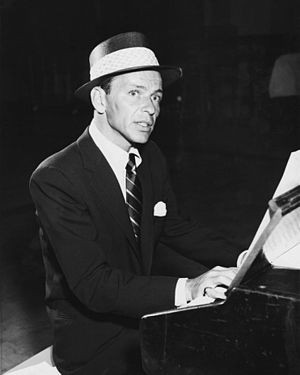
Frank Sinatra with Nelson Riddle and His Orchestra – Learnin’ the Blues
This isn’t up there with the best of Ol’ Blue Eyes, but it’s a pretty slick big band number in which Sinatra runs through how you know you’ve got the blues. However, it’s a pretty upbeat tune. In a poor year though, I guess this is the pick of the bunch.
The Worst

The Cyril Stapleton Orchestra with Julie Dawn – Blue Star (The ‘Medic’ Theme)
This appears to be an instrumental theme from a US medical drama called Medic, which was the first to feature actual medical procedures. But then, more than halfway in, Julie Dawn starts singing a very slushy love song. It’s very average 50s trad pop.
1956
An interesting, bumper year, with the sea change in pop becoming apparent. But not straight away. As we’ve seen, westerns were all the rage in the US and therefore the UK. The Ballad of Davy Crockett was a very successful attempt to promote the Walt Disney film Davy Crockett, King of the Wild Frontier. There were several versions, and actor Bill Hayes did the best out of the folky theme tune. Frank Sinatra returns with (Love Is) The Tender Trap, taken from the film The Tender Trap. It was nominated for an Oscar but it’s pretty average, really. Then Zambezi by Lou Busch and His Orchestra livens things up somewhat. It’s a nice jazzy instrumental, that I’m sure I’ve heard before as background music on a comedy series. A Tear Fell by US singer Teresa Brewer slows things down massively. And then, Elvis Presley, at last! Heartbreak Hotel, his first single for RCA injects some much-needed cool to proceedings. It’s a landmark release, but there was better to come. And then, skiffle! A double A-side of traditional folk tunes, Lost John/Stewball, get The Lonnie Donegan Skiffle Group treatment. They’re much more gentle than the number 1 singles from Donegan in this decade, but still decent. Across the nation, future rock greats were taking note. Next up is a weird one. The All Star Hit Parade was a charity EP for The National Playing Fields Association, in which Dickie Valentine, Joan Regan, Winifred Atwell, Dave King, Lita Roza and David Whitfield contributed very short tracks, I’m assuming to make them all fit on one piece of vinyl. It’s mainly trad pop, and dull, but thankfully over pretty quick. Rounding things up nicely is one of number 1 crooner Frankie Vaughan’s most famous tunes. Green Door, later a number 1 for Shakin’ Stevens was, according to one urban legend, about the UK’s first lesbian club, Gateways, which had a green door.
The Best

Elvis Presley – Hound Dog
A classic that’s aged better than Heartbreak Hotel and many of his future number 1s, where the rot had already set in. Rocky and raunchy, with great drum breaks. Shame The Jordanaires spoil it with their old-fashioned backing vocals.
The Worst

Tony Martin With Hugo Winterhalter’s Orchestra and Chorus – Walk Hand in Hand
The second this dull trad pop from a veteran US actor and singer ended, I’d completely forgotten what it sounded like.
1957
Rock’n’roll is now established, and there’s plenty in the upper reaches of the charts among the ballads. It’s no coincidence that this is the best selection of tracks so far. One of the best ballads of the 50s is Nat ‘King’ Cole’s When I Fall in Love. It’s another masterful performance from Cole, and it’s a shame he never made it to number 1. Elvis wannabe Pat Boone beat ‘The King’ to the top spot, but why not just listen to the real thing? Love Letters in the Sand is better than his number 1, I’ll Be Home, at least. Last Train to San Fernando, by Johnny Duncan and the Blue Grass Boys, is a very interesting mix of bluegrass, calypso and skiffle, featuring Donegan’s former guitarist Denny Wright. Elvis Presley’s Party, which I’ve never heard before, is a nice blast of the early Presley rock’n’roll sound. Another Oscar nomination, Tammy, is typical cheesy 50s teen fare, used in Debbie Reynolds’ romantic comedy Tammy and the Bachelor. I know it from the sample found in The Avalanches’ A Different Feeling and Terry Gilliam’s adaptation of Fear and Loathing in Las Vegas (1998). It’s always made me feel queasy. Did you know Jim Dale from the Carry On films was a pop star before becoming an actor? Me neither, and he makes a decent fist of copying Presley on Be My Girl, produced by George Martin. Wake Up Little Susie is perhaps the most famous song by The Everly Brothers, yet it isn’t among their number 1s. It’s aged very well thanks to those sublime harmonies from Don and Phil and quite risque lyrics. Last up is a live recording of Ma He’s Making Eyes at Me by Johnny Otis and His Orchestra with Marie Adams. Otis is considered a seminal influence on rock’roll and it’s a great performance, particularly that raucous vocal from Adams.
The Best

Harry Belafonte, Tony Scott’s Orchestra and Chorus with Millard Thomas, Guitar – The Banana Boat Song
The pick of a great bunch (sorry) of singles is that calypso classic, originally a Jamaican folk tune, sung to perfection by the future civil rights activist and 1957 Christmas number 1 artist. I will have first heard this on Beetlejuice (1988) and have loved it ever since.
The Worst

Russ Hamilton – We Will Make Love
Easy listening dross sung by one of the first Scouse stars to make a name for themselves. That’s literally the only noteworthy thing to say about this.
1958
A smaller selection, and not much rock’n’roll. It’s a strange batch, but in a good way. Tom Hark by South Africans Elias and His Zig-Zag Jive Flutes is an instrumental kwela, that’s very familiar, probably via TV. The Mudlarks version of novelty bestseller Lollipop is catchy in an irritating sort of way – nice use of echo at the start though. US popsters The Four Preps contribute Big Man, a decent track with a memorable chorus and great harmonies. Interesting premise too, as the singer has dumped his girlfriend in a moment of madness and is now full of regret.
The Best

Elvis Presley with The Jordanaires – Hard-Headed Woman
Lifted from The King’s film King Creole. This was the first rock’n’roll record to go Gold. There’s some great guitar work on this 12-bar blues, and a reliably strong vocal from Elvis.
The Worst

Dean Martin with Orchestra and Chorus Conducted by Gus Levine – Return to Me
A surprisingly dull track from the normally reliable Dean Martin, who sings the last verse in Italian. It’s not bad, but in a year of weird number 2s that at least stand out, it gets lost in the mix.
1959
By now the raw danger of rock’n’roll had been mostly dampened by the teen pop sound. But there are a couple of good examples of that genre to be found. I love Little Richard. What fantastic energy, and what a voice! He can even make the 1920s song Baby Face sound hip. But there are much better tracks out there by the flamboyant personality that should have been more popular in the charts. Kim Wilde’s dad Marty was a star in the 50s, and A Teenager in Love, originally a hit for Dion, is rightly well-remembered. If Battle of New Orleans is anything to go by, Lonnie Donegan’s output had already began to deteriorate. It’s considered a country classic but it’s nothing special to my ears, and the cheesy opening is a sign of things to come from the skiffle trailblazer.
The Best

The Teddy Bears – To Know Him, is to Love Him
Before the late Phil Spector became a mad production genius, and ultimately a murderer, he was a member of this pop trio. To Know Him, is to Love Him, inspired by the words on Spector’s father’s tombstone, was a sign of the songwriting excellence to come. I particularly like the performance of the ‘Why can’t he see’ section by lead singer Annette Kleinbard. She later changed her name to Carol Connors, and co-wrote Gonna Fly Now the brilliantly uplifting theme from Rocky (1976).
The Worst
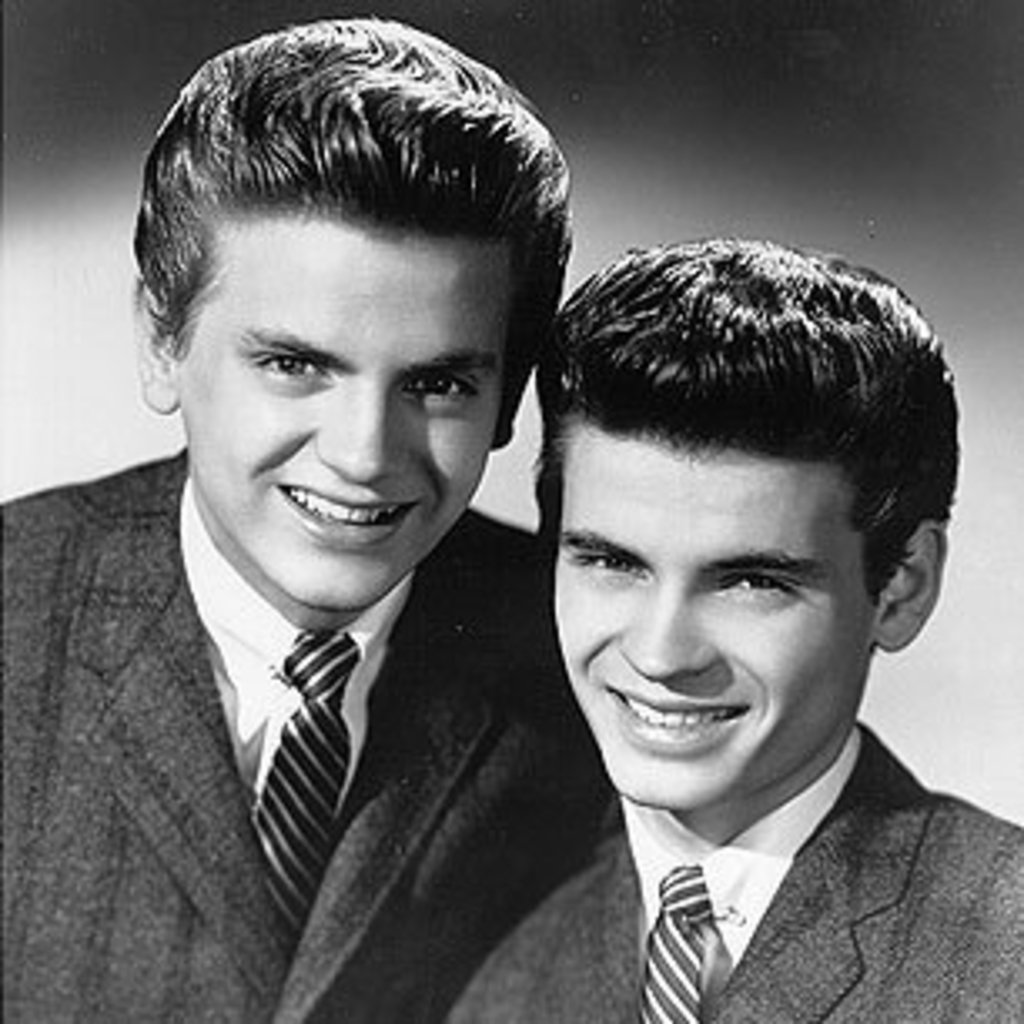
The Everly Brothers – (‘Til) I Kissed You
Somewhat disappointing, plodding pop from Don and Phil. Written by the former.
The Best 50s Number 2 Ever is…
Elvis Presley – Hound Dog
Had to be, really. Elvis Presley’s 50s number 1s, bar Jailhouse Rock, don’t really do the King justice. This however, is rightly considered by many the point at which rock’n’roll truly became a revolution. This Lieber and Stoller 12-bar blues was originally recorded by Big Mama Thornton in 1952. Thornton’s version is better, but Presley also knocks it out of the park.
The Worst 50s Number 2 Ever is…
Tony Martin With Hugo Winterhalter’s Orchestra and Chorus – Walk Hand in Hand
So I listened to this again, and it made as much impression as last time. None. All I can say about it is that it’s very, very dull and we should never forget what rock’n’roll did for us to largely sweep this sort of thing away.
The Outro
I have to confess, this has proved a rather disappointing exercise on the whole! I was hoping for more rock’n’roll classics that I’d also expected to have been number 1s when i began covering them, but the runners-up largely mirror the chart-toppers – trad pop and novelties, a surge of rockn’roll and skiffle, and then teen pop. There’s no soul in there at all. Little Richard is there, but he had to cover a 1920s showtune to get a look-in. But it did at least remind me what a force of nature early Elvis was, and that Nat ‘King’ Cole was one of the greatest crooners. I know that when it comes to covering the 60s number 2s, there will be a larger volume of gems.





